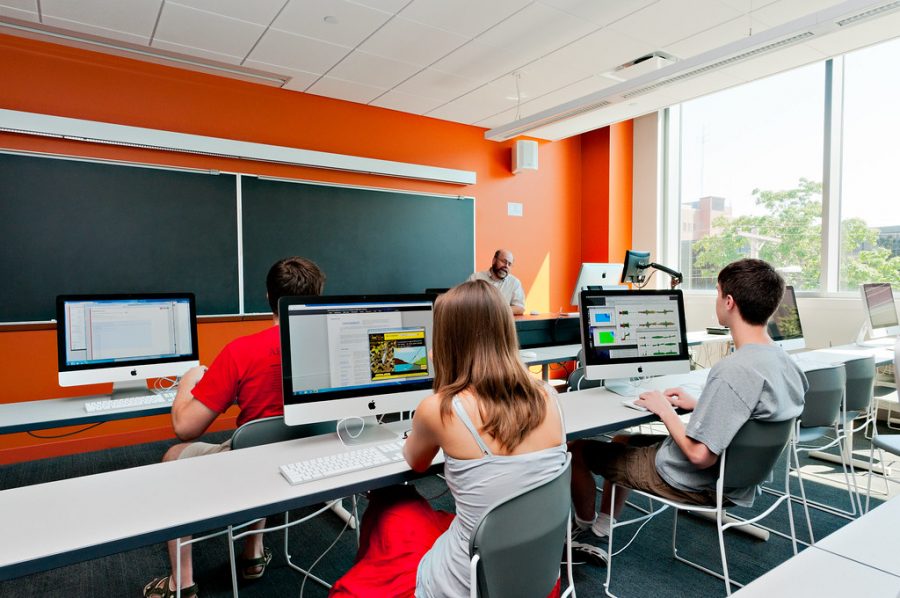Hybrid Learning: Is it Worth the Risks?
February 10, 2021
The months-old debate about whether students should have the option to return to DHS for in-person learning has finally drawn to a close with the District 113 School Board’s decision to provide a hybrid option starting February 23rd. This decision has proven to be somewhat controversial, with some people satisfied and others arguing that making the switch to give so many students the option to learn in-building will be unsafe, unproductive, and an unnecessary routine change. We, the editors, disagree with the latter sentiment and believe that the Board’s decision is beneficial.
Despite numerous drawbacks, the hybrid model has many benefits. For one, it provides a decision. While people are clearly divided on whether schools should reopen, there was previously only the option to go remote. Now, the people who want to go back to school are able to, but not at the expense of those who don’t yet feel comfortable going back since they can just continue to learn remotely as we always have.
We, the members of the Editorial Board, made different decisions on what learning plan we wanted to follow going forward, but we understand why some students are choosing to return to DHS. For instance, there are many people who just aren’t visual or auditory learners, and are able to absorb material much better through hands-on, interactive activities that aren’t possible to do over Zoom, such as labs. Some of us have to take AP exams at the end of year, regardless of whether or not we have retained much information. If we haven’t been in a proper learning environment for all or most of the school year, how would we prepare ourselves for the exams? Also, some students really benefit from the personal connection of face-to-face instruction. Most freshmen have not even experienced a full year of in-person class, meaning that they’re not used to the natural dynamics of a high school classroom.
Students are missing out on a lot of social interaction that we used to get when we were physically at school. We could talk to our friends and peers in the classroom, in the hallways between classes, at lunch, and on the trips to and from school and extracurricular activities―and for almost a year now, we’ve been without all of it. For many of us, our mental health is suffering as a result. This sudden absence of an environment that was saturated with socialization and rich in everyday human interaction that we take for granted has certainly taken a toll.
But as any major decision like this particular one goes, there are some downsides to this that we feel like we should recognize. All of us―students, teachers, support staff, and more― depend on the students’ collective responsibility. We’re relying on a certain age demographic whose irresponsibility has a notoriety that stands the test of time. The safety of hybrid learning depends on the teenagers who created the “Tide Pod Challenge” and governed the island in The Lord of the Flies. As you may have noticed, some fellow students have attended large parties or have outright ignored CDC guidelines during the pandemic since March of 2020. Some of us know enough to not go to parties or attend large gatherings, but who knows if the student standing next to you in the bathroom does? We simply don’t have the confidence that everybody who chooses hybrid learning will properly adhere to COVID-19 rules.
Many things usually work better in theory than in application. We’re thinking: does this apply to the transition to hybrid learning? It’s easy to map out rules and establish social distancing within school spaces, make masks mandatory, etc. But from what we have seen, there is a high percentage of people who keep their masks under their nose or even take their masks off whenever they can as an act of rebellion. In addition to that, hybrid learning means that we can see our friends. We can see our friends that have been in our circle, friends that we haven’t seen since March, friends that we could possibly make in this transition. We know that it’s going to be difficult to constantly maintain six feet of distance away from the people that we love to talk with. But this also means that it’s going to be much more difficult to apply rules that adhere to COVID-19 guidelines realistically.
As the pandemic continues to rage on, it also means that some of us are missing out on receiving a rigorous education promised to us by District 113. People who are against in-person learning and those who are for in-person learning have completely valid concerns. We’re deeply worried about the pandemic, but also about the importance of having a comfortable learning environment. Therefore, we are on the side for hybrid learning and eager about this transition. At the end of the day, the decision to choose to do hybrid learning or not is ultimately up to the individual. We, the editors, chose different options. But we also think that this is the beauty in the district’s transition: the student body has the freedom of choice.

